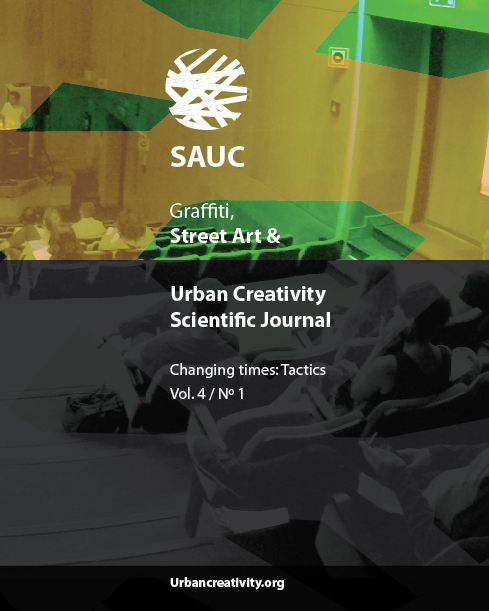A City-wide Art Gallery
DOI:
https://doi.org/10.25765/sauc.v4i1.119Keywords:
Tehran, Gallery, BillboardsAbstract
In Tehran, the capital of Iran, billboards bear two parallel responsibilities with, of course, di erent directions. Some of them have commercial functions, while others transmit moral messages and religious and political slogans. In the spring of 2015, billboards in Tehran suddenly transmitted a new message. A new urban project, called “A City-wide Art Gallery”, converted Tehran into a gallery using billboards. For many people, this was “a city-wide coincidence”. This was the rst time that the municipality of Tehran allocated billboards to a topic that followed neither a commercial nor an ideological purpose. The change that the project brought about in the city’s landscape has sparked debates among citizens and experts. The present study investigates the relationship of citizens with the images displayed in this project and compares this urban-scaled movement to people’s reference to art galleries and museums. Data for this study are collected using questionnaires and interviews. According to the results, the respondents were generally satis ed with the selection of artworks and their layouts. However, the size of the artworks and the size of the subtitle letters of the images were criticized. Data analysis also shows that this program has been able to partially create a discursive space among citizens and encourage people to visit museums and art galleries.
Downloads
Global Statistics ℹ️
|
151
Views
|
0
Downloads
|
|
151
Total
|
|
Downloads
Published
How to Cite
Issue
Section
License
Those authors who publish in this journal accept the following terms:
-
Authors retain copyright.
-
Authors transfer to the journal the right of first publication. The journal also owns the publishing rights.
-
All published contents are governed by an Attribution-NoDerivatives 4.0 International License.
Access the informative version and legal text of the license. By virtue of this, third parties are allowed to use what is published as long as they mention the authorship of the work and the first publication in this journal. If you transform the material, you may not distribute the modified work. -
Authors may make other independent and additional contractual arrangements for non-exclusive distribution of the version of the article published in this journal (e.g., inclusion in an institutional repository or publication in a book) as long as they clearly indicate that the work was first published in this journal.
- Authors are allowed and recommended to publish their work on the Internet (for example on institutional and personal websites), following the publication of, and referencing the journal, as this could lead to constructive exchanges and a more extensive and quick circulation of published works (see The Effect of Open Access).













